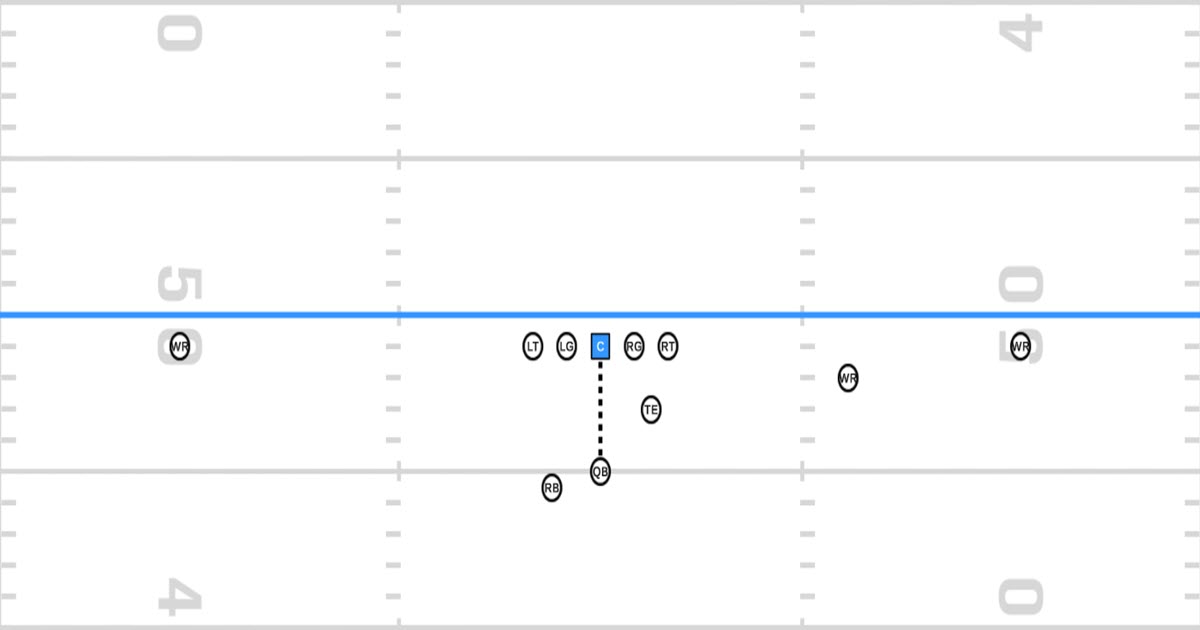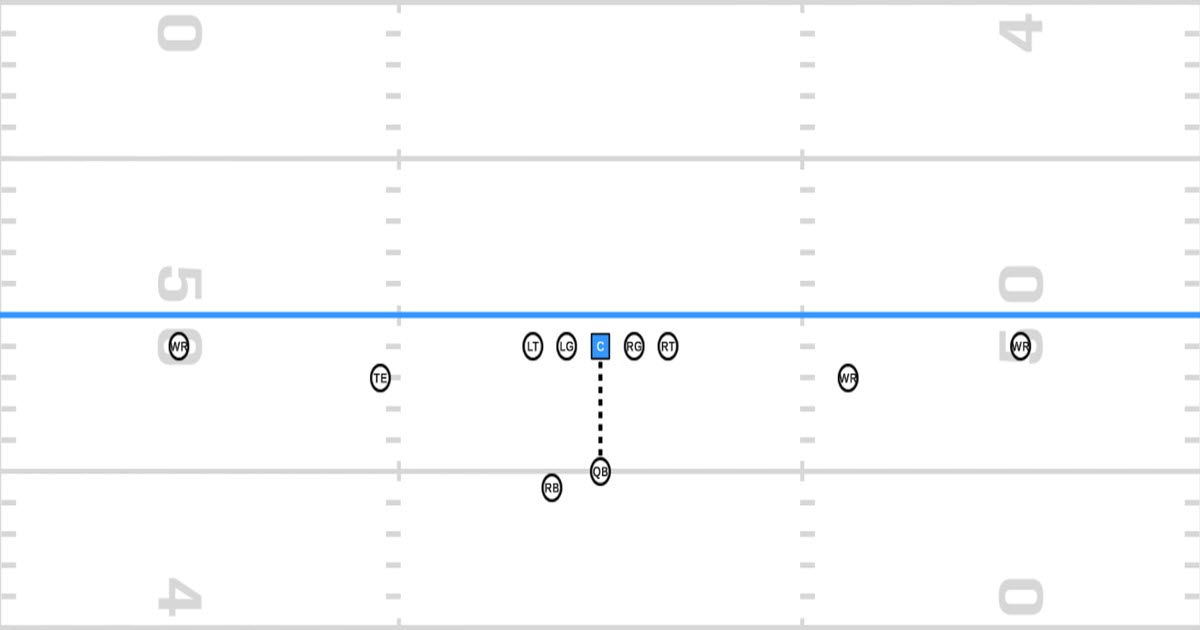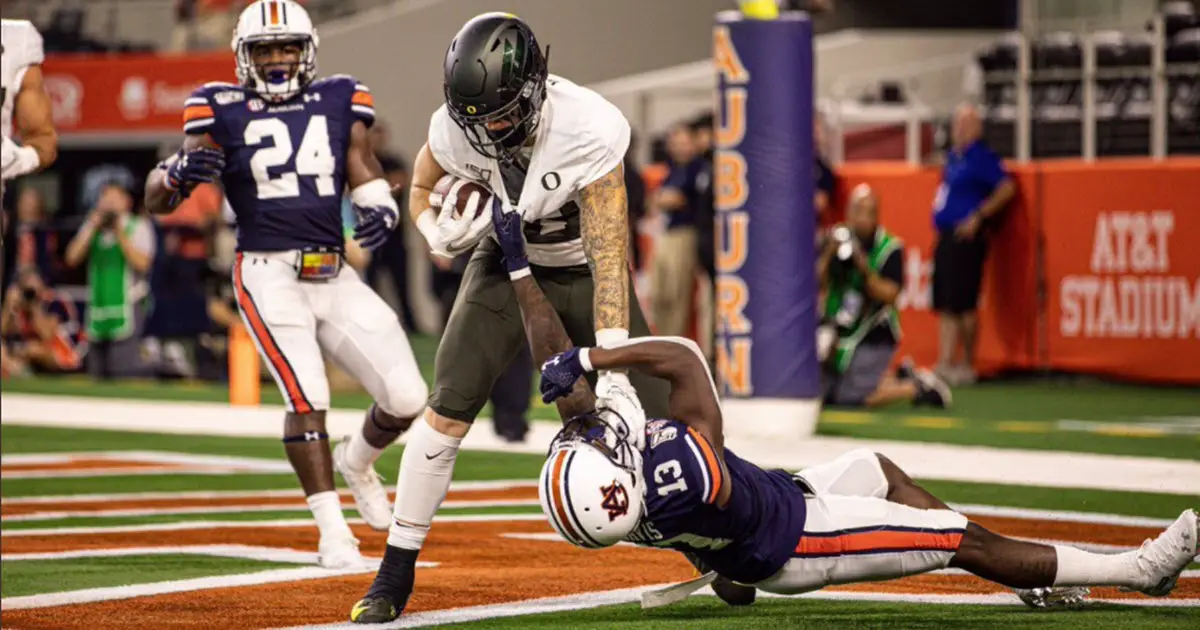Coach Kenny Dillingham, like his mentor, will look to heavily utilize the Tight End position in the new Oregon Ducks offense. Not only did he learn how to effectively utilize the position under Coach Mike Norvell, but Coach Gus Malzahn used his in a very similar fashion during Dillingham’s stint as the Auburn Tigers OC. In both offenses, which Coach Dillingham will almost certainly borrow from, the tight end can align in three different positions.

The H-back Position
The first of these positions is what’s called the H-back position. This is an alignment that has the TE align roughly three yards in the backfield and centered between the offensive tackle and guard. This is slightly different than the Wing position that Oregon used during Coach Mario Cristobal’s time in Eugene, where the TE aligned off of the outside hip of the offensive tackle. (OT)
The H-back position allows the offense to deploy a variety of two back runs. The majority of the runs that are greatly aided by the H-back’s alignment are Gap schemes, including Power, Counter and Buck Sweep. This position allows the TE to more easily kick-out specific first level defenders, allowing a bigger OL to work up to a smaller second-level defender (above).

The In-line Position
The second, and more traditionally recognized, alignment for the tight end is the classic In-line position. This spot is exactly where it sounds like it is; in-line with the rest of the offensive line. Having the tight end in this position creates an extra gap along the line of scrimmage that the defense has to adjust to.
This alignment typically spreads the surface of the defensive line, forcing them into a wider alignment. Because the DL has to spread out to defend the extra gap, there is a better chance for larger running lanes to develop up the middle. If the second-level defenders aren’t able to fill their assignments properly, they will likely be watching the back of the running back’s jersey.
The In-line TE can also allow for some creativity if he is aligned to the same side as the lone wide receiver. The TE being on the line means that the WR is off, and able to motion to multiple areas of the field. This gives the offense the opportunity to really stress the defense as it changes numbers, and defensive assignments, on the fly.

The Split End Position
The last position that the TE can align in is the Split End. I’m going to use that term to generally describe a TE in any of the WR positions, but he will more likely than not be in the slot in this offense. Getting him out in space does more than just spread the defense out, it creates a matchup issue.
If the TE is a skilled pass catcher, and he should be if he’s lining up at slot, he’ll be tough to cover. A lot of LBs won’t have the coverage skills to defend him, and he’ll use his size to out-position most corners. With the right guy, that’s a defensive nightmare.
Any of these three positions have the possibility of showing up on the field at the same time. Coach Dillingham’s offenses have consistently used 12-personnel (one RB, two TEs) and it has expressed itself in multiple ways. That could be two In-line guys, one H-back and one In-line, a Split End and an H-back, etc. The ways Coach Dillingham intends to use TEs in his system could be near endless, and it’s going to be exciting to watch.
Coach Eric Boles
Newark, OH
Top Photo Credit: Twitter
Eric resides in Central Ohio, just outside the capital city of Columbus. He is a former offensive assistant and return game coordinator for the Ohio State – Newark/Central Ohio Technical College Titans football program.
He is an OSU-N graduate, having completed a Bachelor of Arts program in psychology.

